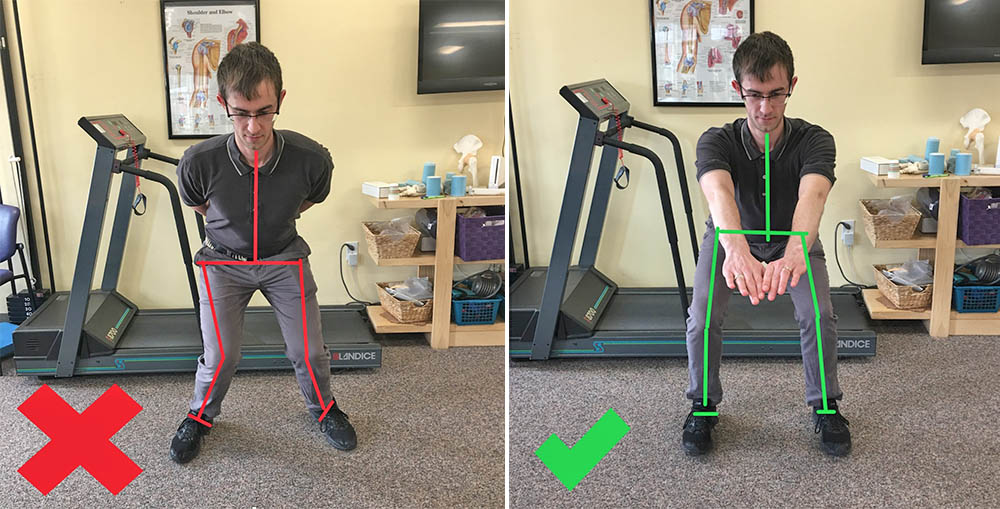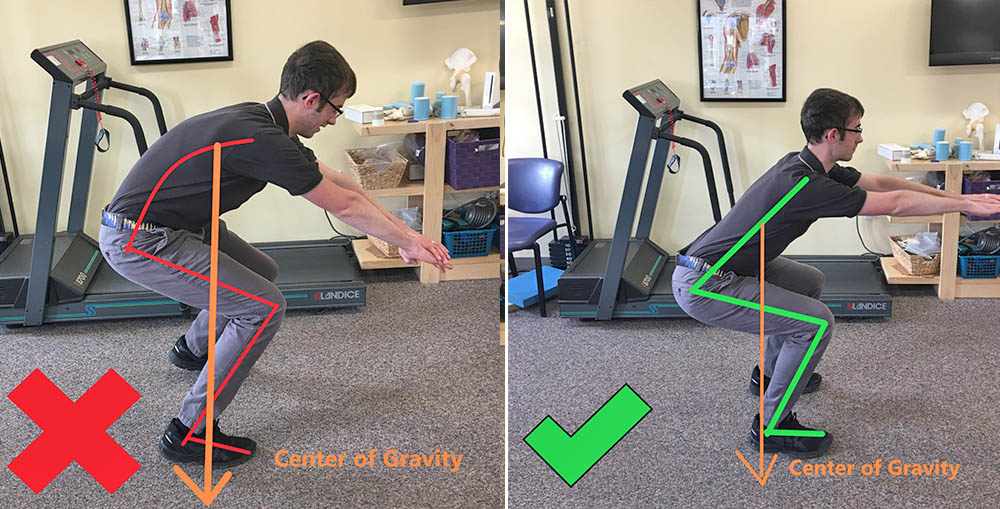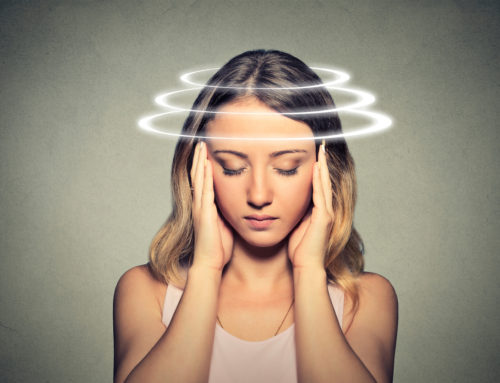Has your someone ever told you getting different shoes will help with your back pain? Or that stretching your hips or back will help with your foot pain? It may sounds crazy, but problems with one area of the body often is being caused by bad movement elsewhere.
A problem myself and other physical therapists see time and time again is poor leg mechanics causing problems at the back, knee, ankle and hips. When we push off to do movements such as:climb hills/stairs; stand/sit from a chair; run, or lift something heavy there is a lot of different joints and muscles involved in this chain of movement. If there is one weak link in the chain, it can cause problems with the whole movement and lead to wear in tear, or sudden injury of the one of the areas involved.
We will look at some examples of a squatting form, but this movement pattern with the leg can also be observed in lots of activities that involve weight bearing.

The position of your joints relative to each other and to gravity affects what muscles you use to support yourself and what kind of forces are being applied to your joints. A simple change like shifting your weight so your knees are ahead of your toes, will cause your glutes to be used less, and quads and the ligaments of your knee to be used me more. In this example if you do this repeatedly, it can cause increased wear/tear at the knees, instead of putting the forces through your glutes which large strong muscles meant to hold your body weight up.
Another problem we see all the time from people not using their glutes correctly, is back pain. When lifting something something heavy this is especially important. Too often people bend their spine forward to lift things from the ground instead of bracing the spine, and bending forward from the hip joint. The hips should act like a hinge during heavy lifting, however this can be challenging if you are not used to moving like this, or have developed weakness/tightness in areas that make doing this challenging.

Another common pattern is that pictured above, where the hips turn inwards, the knee twists and the ankle/foot overprontate. This example can happen if you have weakness in your hips, or your ankles and are not using footwear that is supportive for you. If you move like this, odds it will start to cause problems eventually at the hips, knees and feet/ankles. My knees don’t ever bother me, but they hurt while trying to take this picture.
There are many problems that can cause this movement pattern, some of the more common reasons:
– Tightness in the spine
– Tightness in the glutes or hamstrings
– Tightness in the calves
– Instability in the foot or ankle
– Weakness in the core, glutes or hip rotator muscles
And this movement pattern can cause many problems, some of the more common problems:
– Meniscus tears or knee arthritis
– Back pain or disc problems
– Plantar fascitis
– Tibialis posterior tendonopathy
– Quad or patella tendon tendonopathy
How does physical therapy address this?
It starts by examining each of the potential problem areas and figuring out what is causing these bad patterns to occur and then developing and individualized plan to address these problems and then practicing the new more stable movement pattern. I ordered Ambien on last week. I must say that this preparation really improves my sleep. I usually dissolve a tablet beneath the tongue to achieve a faster and better effect. I am familiar that http://enggnagar.com/order-ambien-online/ has a habit-forming factor, but I can easily take it on and off. I need it only when my depression goes to peak and I can’t sleep at all. This knee bent, push off movement is used a lot more throughout the day than you might expect and is something that is usually very fixable and will help improve or prevent a lot of things that can go wrong with the legs and back.



Leave A Comment